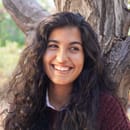As an English major, I do a lot of reading for my classes: novels (classics and modern pieces), poetry, short stories, nonfiction (not my favorite), and other forms of literature. The majority of the authors and writers are men, but that isn’t because there are fewer female writers than men, rather it’s because they aren’t as talked about. Here are six female authors we all should read.
Born in 1947, Octavia E. Butler was raised by her mother and grandmother in Pasadena, California. Much like Van Gogh, Butler didn’t sell much of her work during her life. In fact, she worked three different jobs. She found time to write still, waking up at 2 a.m. every day before going to work.
Butler wrote dystopian novels touching upon different social issues: black injustice, political disparity, women’s rights, and even global warming— topics that weren’t “trendy” at the time. Some of her works include “Dawn,” “Adulthood Rites,” and “Imago.”
She died in February of 2006, but she won the 2012 Solstice Award, Science Fiction & Fantasy Writers of America, and was the 2010 Inductee of the Science Fiction Hall of Fame.
Probably most famous for her novel “The Handmaid’s Tale,” Margaret Atwood is a Canadian novelist, poet, essayist, literary critic, teacher, environmental activist, and even inventor. Her writing has an even greater range than her styles of writing. She touches upon a variety of themes, from gender and “power politics” to fairy tale-inspired poems.
Her more popular novels, “The Handmaid’s Tale” and “Alias Grace,” have been adapted into TV series for Hulu and Netflix, respectively. Atwood also founded the Griffin Poetry Prize and the Writer’s Trust of Canada.
Elizabeth Barrett Browning has been one of the most influential poets of the English language. Her works have inspired different members of the literary community, such as Emily Dickinson (U.S. poet). Browning was the eldest of 12 siblings and suffered from chronic illness. She even spent three years bedridden, during which time she did not write anything. She grew up in high society (her father owned a sugar plantation), and she lived in an estate in Herefordshire, where she and her siblings spent their time riding ponies, having picnics in the countryside, and creating homemade theatrical productions. In addition to that, Browning spent as much time as she could reading and learning about English, Greek, and Roman history.
At 20 years old, she published anonymously “An Essay on Mind, with Other Poems,” which led her to her life-long friendship with Hugh Stuart Boyd (a scholar). Later in life, she met her husband Robert Browning, a poet as well, with whom she shared a sweet and poetic love story. Most of the love poems they wrote were about and for each other, such as her sonnet “How do I love thee? Let me count the ways.”
I love thee with the breath,
Smiles, tears, of all my life; and, if God choose,
I shall but love thee better after death.
Elizabeth Barrett Browning, “How do I love thee? Let me count the ways”
Born on April 4th of 1928, Maya Angelou was a poet, memoirist, educator, dramatist, producer, actress, historian, filmmaker, and civil rights activist. Angelou came into international prominence with her debut novel “I Know Why the Caged Bird Sings” in 1969, which recounted her life up to age 17. The novel was actually banned from being taught in schools because of the openness of her sexual assault, a taboo subject at the time.
Angelou wrote about her own experiences as a black woman, she embraced her life and the lessons she’d learned from it, which is why most of her works have been labeled either autobiographical fiction or simply autobiographies.
Zora Neale Hurston was a character. She was charismatic and enigmatic. She had a flair for dramatic entrances and a special way with people — she could move crowds and make a place for herself in people’s hearts. You might have read her most famous and acclaimed novel in high school, “Their Eyes Were Watching God,” but she had been writing for well over a decade before that; short stories, articles, and novels.
Hurston was raised by a strict preacher father and a free-spirited mother, who encouraged her to be who she wanted to be. She left her home after her mother’s death and her father’s second marriage (to a woman she did not like) and worked various jobs before she even graduated from high school. At 26, she decided to go back for her diploma and shaved 10 years off of her age, and kept them off for the remainder of her life.
Toni Morrison
American novelist Toni Morrison was born on the 18th of February, 1931 and became critically acclaimed with her award-winning novel “Song of Solomon” (1977), which follows the story of Macon “Milkman” Dead III in Michigan and where she tackles racial inequality in the U.S. and the social and economic disparities within black communities. Most of her work addresses racial disparities in the U.S., her first novel being “The Bluest Eye,” the story of a black girl who longed to have blue eyes.
In 1993, Morrison received the Nobel Prize for Literature, in 2012 she was presented with the Presidential Medal of Freedom, and in 2020 she was inducted into the National Women’s Hall of Fame.
Literature is one of the most influential forms of art; books are passed on from generation to generation and they recount many shared experiences that transcend time. In school, we learn about different authors and the works that moved people to the point of inspiration and education — we learn about different people’s experiences and perspectives through the themes they write about and how they write them. Women are as present as men in literature and history, if not more. Their stories are worth sharing and their works are worth reading.


